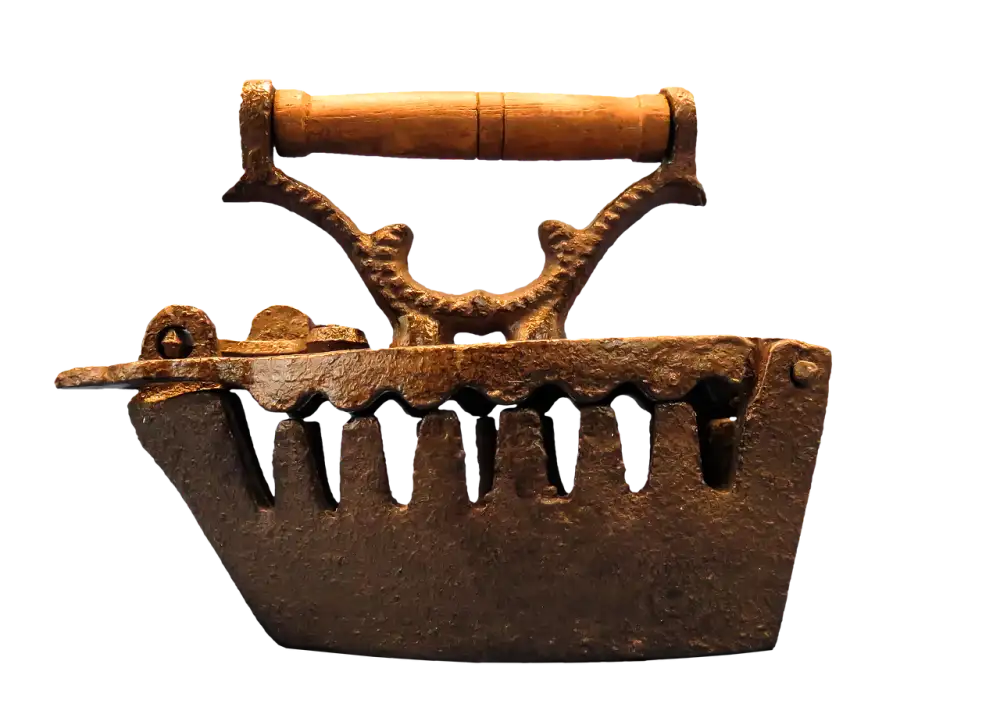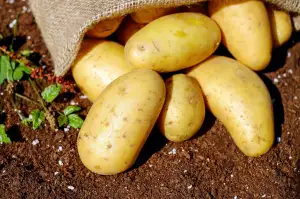Unlock the Secrets: Season Your Cast Iron Pan for Perfectly Cooked Delights

- Benefits of Seasoning a Cast Iron Pan
- Step-by-Step Guide to Seasoning a Cast Iron Pan
- Gather necessary materials
- Clean the cast iron pan
- Dry the pan thoroughly
- Apply a thin layer of oil
- Heat the pan
- Allow the oil to polymerize
- Repeat the process if needed
- Tips for Maintaining a Seasoned Cast Iron Pan
- Avoid using soap
- Use gentle cleaning methods
- Dry the pan immediately after cleaning
- Apply a thin layer of oil after each use
- Store the pan properly
Seasoning a cast iron pan is an essential step in achieving perfectly cooked delights. This process involves coating the pan with oil and heating it to create a natural non-stick surface. By seasoning your cast iron pan, you unlock its full potential and ensure that your food cooks evenly and releases easily. Whether you're a kitchen novice or a culinary pro, mastering the art of seasoning will elevate your cooking game to new heights. In this article, we will explore the benefits of seasoning a cast iron pan and provide you with a step-by-step guide to achieve optimal results. So let's dive in and unlock the secrets of seasoning for culinary excellence!
Benefits of Seasoning a Cast Iron Pan
Seasoning a cast iron pan offers numerous benefits that make it an essential technique for any home cook. Here are some of the key advantages:
1. Non-stick surface: A well-seasoned cast iron pan develops a natural non-stick coating, making it ideal for cooking delicate foods like eggs and fish without worrying about them sticking to the surface.
2. Even heat distribution: Seasoning helps the pan retain and distribute heat evenly, ensuring that your food cooks consistently and thoroughly.
3. Enhanced flavor: The seasoned surface of a cast iron pan imparts a unique depth of flavor to your dishes, adding an extra dimension to your culinary creations.
4. Durability: Properly seasoned cast iron pans are incredibly durable and can last for generations with proper care. They are resistant to scratches, rust, and wear, making them a worthwhile investment.
5. Versatility: A seasoned cast iron pan can be used on various heat sources, including stovetops, ovens, grills, and even campfires. Its versatility makes it a valuable tool in any kitchen or outdoor cooking setup.
By taking the time to season your cast iron pan properly, you unlock these benefits and ensure that every meal you prepare is cooked to perfection.
Step-by-Step Guide to Seasoning a Cast Iron Pan
1. Gather necessary materials: You will need a cast iron pan, cooking oil (such as vegetable or flaxseed oil), paper towels, and an oven.
2. Clean the cast iron pan: Scrub the pan with hot water and a stiff brush to remove any dirt or residue. Avoid using soap, as it can strip away the seasoning.
3. Dry the pan thoroughly: Use a clean towel to dry the pan completely. Moisture can lead to rusting, so ensure it is completely dry before proceeding.
4. Apply a thin layer of oil: Pour a small amount of oil onto a paper towel and rub it all over the surface of the pan, including the handle and sides. Make sure to coat every inch evenly.
5. Heat the pan: Preheat your oven to 350°F (175°C). Place the oiled cast iron pan upside down on the middle rack of the oven, with a baking sheet or aluminum foil on the bottom rack to catch any drips.
6. Allow the oil to polymerize: Bake the cast iron pan for one hour, allowing the oil to heat up and form a protective layer on its surface. This process is called polymerization and helps create a non-stick coating.
7. Repeat the process if needed: If your cast iron pan still appears dull or sticky after seasoning once, repeat steps 4-6 until you achieve a smooth and shiny finish.
By following these simple steps, you can season your cast iron pan effectively and enjoy its many benefits in your cooking journey.
Gather necessary materials
To season a cast iron pan, you will need a few essential materials. Firstly, gather a clean sponge or cloth, mild dish soap, and warm water for cleaning the pan. Next, ensure you have a clean towel or paper towels to dry the pan thoroughly. Lastly, you will need a high smoke point oil such as vegetable oil, canola oil, or flaxseed oil to apply a thin layer on the pan's surface. With these materials ready, you can begin the seasoning process for your cast iron pan.
Clean the cast iron pan
To clean a cast iron pan, start by rinsing it with hot water. Avoid using soap as it can strip away the seasoning. Use a stiff brush or sponge to scrub off any food residue or stuck-on bits. If needed, you can use a small amount of coarse salt as an abrasive. Rinse the pan thoroughly and make sure all the debris is removed. Pat dry with a clean towel or paper towels. Avoid air-drying as it can lead to rusting.
Dry the pan thoroughly
After cleaning the cast iron pan, it is crucial to dry it thoroughly. Any moisture left on the surface can lead to rusting and damage the seasoning. To dry the pan, use a clean towel or paper towels to remove any remaining water. Ensure that all parts of the pan are completely dry before proceeding to the next step of seasoning.
Apply a thin layer of oil
After thoroughly drying the cast iron pan, it's time to apply a thin layer of oil. This step is crucial as it helps create a protective barrier on the surface of the pan, preventing food from sticking and promoting even heat distribution.
To apply the oil, use a paper towel or a clean cloth to spread a small amount of cooking oil all over the pan, including the sides and handle. Make sure to cover every inch of the pan's surface with a thin and even layer of oil.
It's important not to use too much oil as it can lead to a sticky residue on your pan. A little goes a long way when it comes to seasoning cast iron. Once you've applied the oil, gently wipe off any excess with another clean paper towel or cloth.
Now that your cast iron pan is properly seasoned and oiled, it's ready for use! The next step is heating the pan to help polymerize the oil and create that beautiful non-stick surface we all love.
Heat the pan
Heat the pan: Once you have applied a thin layer of oil to the cast iron pan, it's time to heat it. Place the pan on a stovetop burner set to medium-high heat. Allow the pan to heat up for about 5-10 minutes. Heating the pan helps to open up the pores of the cast iron and allows the oil to penetrate and bond with the surface. Make sure to use oven mitts or a towel when handling the hot pan to avoid burns.
Allow the oil to polymerize
Once the cast iron pan is heated, it's time to allow the oil to polymerize. This process involves the oil forming a hard, slick surface that will provide a non-stick cooking surface. Let the pan heat for about 1 hour, ensuring that the entire surface is evenly heated. During this time, you may notice smoke or a slight odor - this is normal and indicates that the oil is polymerizing. Once the hour is up, turn off the heat and allow the pan to cool completely before using or storing it. The result? A perfectly seasoned cast iron pan ready to create culinary masterpieces!
Repeat the process if needed
If after the initial seasoning process, you find that your cast iron pan still doesn't have a smooth and non-stick surface, don't worry. You can simply repeat the seasoning process to achieve the desired results. Follow the same steps of cleaning, drying, and applying a thin layer of oil. Heat the pan again in the oven or on the stovetop until it reaches the smoking point. Allow the oil to polymerize and create that beautiful black patina. Repeat this process as many times as necessary until your cast iron pan is perfectly seasoned and ready for cooking delicious meals.
Tips for Maintaining a Seasoned Cast Iron Pan
1. Avoid using soap: Soap can strip away the seasoning on your cast iron pan. Instead, use a brush or sponge with hot water to clean off any food residue.
2. Use gentle cleaning methods: Avoid using abrasive scrubbers or harsh chemicals that can damage the seasoning. Opt for non-metallic scrub brushes or nylon pads to gently remove stuck-on food.
3. Dry the pan immediately after cleaning: Moisture can cause rusting, so it's important to dry your cast iron pan thoroughly after washing. Place it on low heat on the stovetop or in a warm oven to ensure complete drying.
4. Apply a thin layer of oil after each use: After cleaning and drying, apply a thin layer of oil to keep the pan seasoned and prevent rusting. You can use vegetable oil, flaxseed oil, or even bacon grease for this purpose.
5. Store the pan properly: To avoid moisture buildup and potential rusting, store your cast iron pan in a dry place with good ventilation. If stacking pans, place a paper towel between each one to prevent scratching and moisture retention.
By following these tips, you can maintain the seasoning on your cast iron pan and enjoy its excellent cooking performance for years to come!
Avoid using soap
When it comes to cleaning your seasoned cast iron pan, it's important to avoid using soap. Soap can strip away the seasoning that you have worked so hard to build up, leaving your pan vulnerable to rust and food sticking. Instead, opt for a gentle cleaning method such as using hot water and a stiff brush or a non-abrasive sponge. This will help remove any food residue without compromising the seasoning. Remember, the natural oils in the pan's surface are what give it its non-stick properties, so preserving them is key. By avoiding soap, you can maintain the integrity of your seasoned cast iron pan and continue enjoying perfectly cooked delights for years to come.
Use gentle cleaning methods
When it comes to cleaning your seasoned cast iron pan, it's important to use gentle methods to avoid stripping away the seasoning. Avoid using harsh scrub brushes or abrasive cleaners that can damage the surface of the pan. Instead, opt for a soft sponge or cloth and warm water to gently remove any food residue. If there are stubborn bits stuck to the pan, you can use a nylon brush or scraper. Remember, the goal is to preserve the seasoning while still keeping your pan clean and ready for future cooking adventures.
Dry the pan immediately after cleaning
After cleaning your cast iron pan, it is crucial to dry it immediately to prevent any moisture from causing rust. Use a clean towel or paper towels to thoroughly dry the pan inside and out. Make sure to pay extra attention to the handle and any crevices where water may have collected. Leaving the pan damp can lead to corrosion, which will ruin the seasoning and affect the performance of your pan. So, always remember to dry your cast iron pan promptly after cleaning for optimal results.
Apply a thin layer of oil after each use
After each use, it is important to apply a thin layer of oil to your cast iron pan. This helps to maintain the seasoning and prevent rusting. Simply pour a small amount of oil onto a paper towel or cloth and rub it all over the surface of the pan, including the handle. Make sure to coat both the inside and outside of the pan evenly. This will help to keep your cast iron pan in excellent condition and ready for your next cooking adventure.
Store the pan properly
4. Tips for Maintaining a Seasoned Cast Iron Pan
...
5. Store the pan properly
Properly storing your seasoned cast iron pan is essential to maintain its seasoning and prolong its lifespan. Here are some tips to help you store your pan correctly:
- Make sure the pan is completely dry before storing it. Any moisture left in the pan can lead to rusting.
- Avoid stacking other heavy pans or utensils on top of your cast iron pan, as this can cause damage to the seasoning.
- Consider using a cloth or paper towel to place between stacked pans to prevent scratching or chipping of the seasoning.
- Find a cool, dry place in your kitchen or pantry to store your cast iron pan. Avoid storing it in areas with high humidity, such as near the sink or stove.
By following these proper storage techniques, you can ensure that your seasoned cast iron pan remains in excellent condition and ready for use whenever you need it.
In conclusion, seasoning your cast iron pan is essential for achieving perfectly cooked delights. By following the step-by-step guide and maintaining your seasoned pan properly, you can unlock its full potential. A well-seasoned cast iron pan provides even heat distribution, prevents food from sticking, and adds a unique flavor to your dishes. So, embrace the secrets of seasoning and elevate your culinary skills to new heights with the wonders of a well-seasoned cast iron pan. Happy cooking!
Published: 27. 11. 2023
Category: Food



